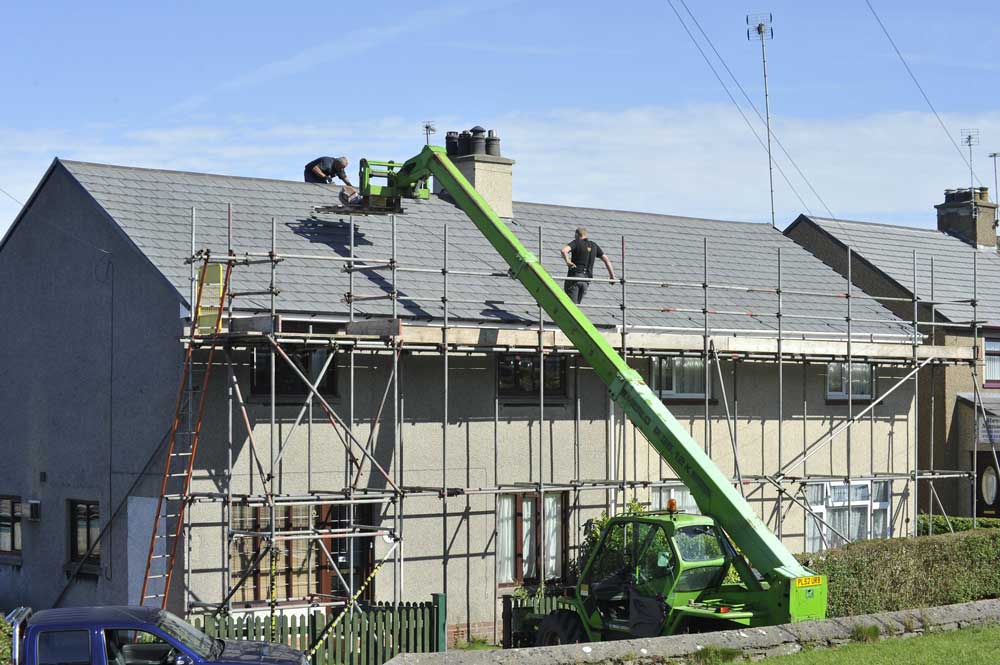ESPANOLA—Members of the Manitoulin-Sudbury District Services Board (DSB) received a “high level” briefing on the new federal National Housing Strategy from Canada Mortgage and Housing’s (CMHC) affordable housing consultant—Northern Ontario’s Jeffery C. Kolibash.
Mr. Kolibash noted that the new housing strategy marks a return of the federal government to affordable housing construction co-investment. The new program earmarks $15.9 billion for the National Housing Co-investment Fund.
“There are two streams (to the national housing strategy),” he noted, “new construction and repair and renewal.”
But what sets this new strategy apart is the $500 million allocated to new construction projects this year, the same next year and doubles to $1 billion each year thereafter. “This is a 10-year strategy,” he pointed out. “The biggest part of this money is that the federal government is back in the housing game for the first time since 2012.”
The focus of the national housing strategy is on vulnerable populations. “I know that all of your communities have those populations,” said Mr. Kolibash. (The DSB is made up of representatives from Manitoulin and several Northeastern Ontario communities stretching from Chapleau and Foleyet to the region around Sudbury to Cochrane.)
The CMHC representative committed to working with communities to assist in meeting the necessary program benchmarks. “If your community can’t work with it, we will work with you to try and get something done.”
The program sets a minimum of five units of which 20 percent must be accessible (or universally designed), have 25 percent or better energy efficiency and come with a 20-year commitment to affordability. The program makes allowances for certain projects to have a greater number of units/beds to ensure financial viability. There may also be a non-residential component to projects, but that is not to exceed 30 percent of total gross floor space or total value/cost.
The program encompasses standard rental buildings, shelters, transitional and supportive housing and seniors housing. Eligible applicants can include the community housing sector (such as non-profit or rental cooperatives), municipal, provincial and territorial governments, Indigenous governments and organizations (including First Nations bands and tribal councils), as well as private entrepreneurs or developers.
Applicants must have at least five years’ experience operating a housing property of similar type and size (but a formal property management contract with a third party can fit the bill). Applicants must show at least a break-even cash flow over the past five years with an excellent credit and repayment history.
The applicant must have construction management experience wherein they have successfully completed a similar project on time and within budget, unless they enter into a fixed price contract with a general contractor who has experience building projects of similar size, cost, building form and construction type in the same market area and have a demonstrated ability to withstand unexpected increases in construction costs. For newly formed groups, alternative covenants and mitigation may be considered.
The mandatory minimum requirements include that proponents must demonstrate financial and operational ability to carry out the project and to provide evidence of the financial viability of the project and capacity to deal with cost overruns and delays.
Rents for at least 30 percent of the units must be less than 80 percent of the median (half above and half below) market rent and maintained for at least 20 years.
New construction projects must hit at least a $1,000,000 (loan or contribution) level, whereas repairs must be $250,000. The maximum loans for co-ops, non-profits or Indigenous groups will be up to 95 percent of eligible costs (that being the residential component), while provincial or territorial and municipal governments and the private sector threshold is up to 75 percent.
The interest rate on the 20-year loan will be a fixed rate below market, but amortization on new construction will be up to 50 years (repairs will go as long as 40 years).
Through all of this, the CMHC consultant has committed to work with applicants and, considering the challenges of the North, Mr. Kolibash noted that there is considerable flexibility in the thresholds regarding project size and other parameters.
The consultant added that there is an online viability assessment tool available for proponents to discover how much chance their projects have of meeting the points criteria for acceptance. “You just plug in the numbers and the tool self-populates.”
Northeast Town Mayor Al MacNevin asked if a property donation would meet the contribution requirements, noting that his community might have property that would be earmarked for the construction of housing, to which Mr. Kolibash replied that “no, that is equity, but we might take a look at it if that is what it will take to move the project forward.”
In all aspects of the National Housing Strategy the consultant emphasized that the program managers would strive by working with proponents to ensure that projects that meet the goals of providing affordable housing to vulnerable populations have every chance of success.





